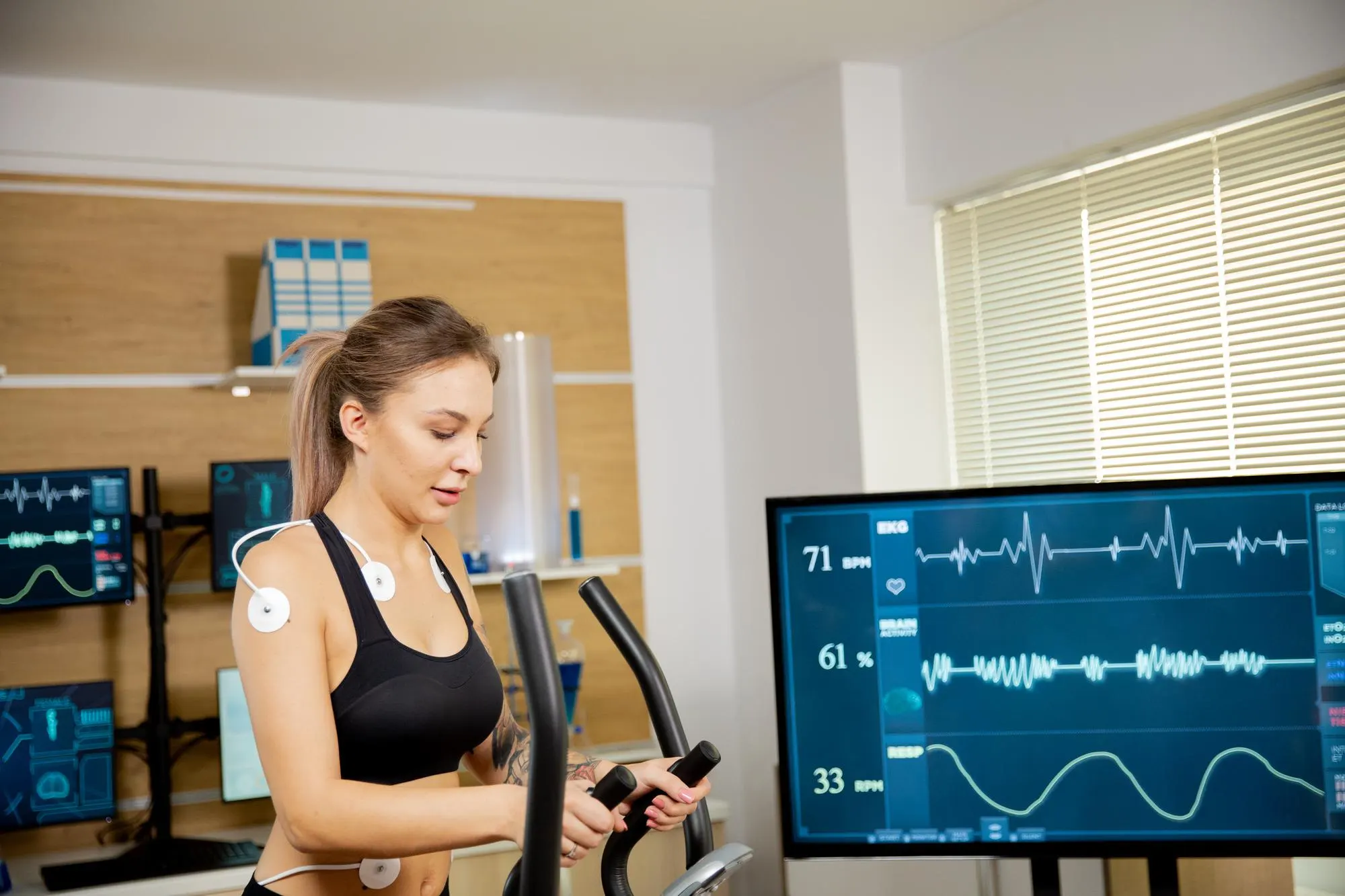Heart rate variability (HRV) is a critical physiological marker that reflects the body’s ability to adapt to stress, recover from exertion, and maintain overall health. Unlike heart rate, which simply measures the number of beats per minute, HRV assesses the variation in time between successive heartbeats. This variability is governed by the autonomic nervous system (ANS), which plays a key role in regulating involuntary bodily functions such as breathing, digestion, and circulation.
In recent years, HRV has garnered increasing attention from medical professionals, athletes, and wellness enthusiasts alike due to its strong association with cardiovascular health, stress resilience, and athletic performance. With the advent of wearable health technologies, tracking HRV has become more accessible, allowing individuals to gain real-time insights into their physiological state.
This article explores the science behind HRV, its significance in health and wellness, factors influencing it, and evidence-based strategies for optimizing it.
In This Article
Understanding Heart Rate Variability
HRV is a direct reflection of the autonomic nervous system’s ability to maintain balance between its two primary components:
- The Sympathetic Nervous System (SNS): Often referred to as the “fight-or-flight” system, the SNS prepares the body for action by increasing heart rate, dilating airways, and redirecting blood flow to muscles. It is typically activated during stress, exercise, or perceived threats.
- The Parasympathetic Nervous System (PNS): Known as the “rest-and-digest” system, the PNS counters the effects of the SNS by slowing the heart rate, promoting relaxation, and facilitating recovery processes. The vagus nerve, a key component of the PNS, plays a crucial role in modulating HRV.
A high HRV generally indicates a well-functioning autonomic nervous system, suggesting adaptability and resilience to physiological and psychological stressors. Conversely, a low HRV may be a sign of chronic stress, poor cardiovascular health, or overtraining.
Why HRV Matters
HRV is not merely a measure of heart function; it serves as a valuable biomarker for:
- Cardiovascular health: Lower HRV has been linked to an increased risk of heart disease, hypertension, and sudden cardiac events.
- Mental well-being: Higher HRV is associated with better emotional regulation, reduced anxiety, and improved stress resilience.
- Athletic performance and recovery: Athletes use HRV to monitor training intensity, optimize recovery, and prevent overtraining.
- Longevity and overall health: Research suggests that individuals with higher HRV tend to have better overall health outcomes and increased longevity.
Factors Influencing HRV
HRV is influenced by a variety of factors, both intrinsic and extrinsic. Understanding these factors can help individuals take proactive steps to optimize their HRV and, consequently, their overall health.
Intrinsic Factors
- Age: HRV naturally declines with age due to physiological changes in the cardiovascular and nervous systems.
- Genetics: Some individuals have inherently higher or lower HRV due to genetic predisposition.
- Sex: Studies indicate that men tend to have slightly higher HRV than women, though the differences are often minimal.
Lifestyle and Environmental Factors
- Physical Activity: Regular aerobic exercise has been shown to improve HRV by enhancing parasympathetic tone. However, excessive training without adequate recovery can lead to HRV suppression.
- Sleep Quality: Restorative sleep is crucial for maintaining high HRV, as it allows the body to engage in essential recovery processes.
- Stress Levels: Chronic stress keeps the body in a prolonged sympathetic state, reducing HRV over time. Stress management techniques such as meditation and deep breathing can help improve HRV.
- Nutrition and Hydration: A diet rich in whole foods, healthy fats, and essential nutrients supports optimal autonomic function. Dehydration, on the other hand, can negatively impact HRV.
- Substance Use: Excessive alcohol consumption, caffeine, and smoking have been shown to suppress HRV.
Medical and Health Conditions
- Cardiovascular Diseases: Conditions such as hypertension, arrhythmias, and heart disease often result in lower HRV.
- Metabolic Disorders: Diabetes and obesity can negatively affect autonomic function, reducing HRV.
- Mental Health Conditions: Anxiety, depression, and PTSD are often associated with lower HRV due to chronic sympathetic activation.
HRV Across Different Age Groups
HRV values vary significantly among individuals, but general trends can be observed across age groups. The table below provides an overview of typical HRV ranges based on age:
| Age Group | Average HRV (ms) |
|---|---|
| 18-25 | 55-105 |
| 26-35 | 50-100 |
| 36-45 | 45-95 |
| 46-55 | 40-85 |
| 56-65 | 35-75 |
| 66+ | 30-65 |
While these numbers serve as a reference, it is more useful for individuals to track their own HRV trends over time rather than compare themselves to population averages.
How to Measure HRV
With advancements in health-monitoring technology, HRV can now be measured using several methods:
- Wearable Devices: Smartwatches and fitness trackers, such as the Apple Watch, Whoop Strap, and Oura Ring, provide real-time HRV tracking.
- Chest Strap Monitors: Devices like the Polar H10 offer more precise HRV readings compared to wrist-based wearables.
- Electrocardiograms (ECG): The gold standard for HRV measurement, ECGs provide the most accurate and detailed heart variability analysis, often used in clinical settings.
Understanding one’s baseline HRV and monitoring fluctuations can provide valuable insights into health, stress levels, and recovery needs.
How to Improve HRV
Optimizing HRV requires a holistic approach that focuses on lifestyle, recovery, and overall well-being.
Practical Strategies for Boosting HRV
- Prioritize Restorative Sleep: Aim for 7-9 hours of high-quality sleep per night. Establishing a consistent sleep schedule and optimizing sleep hygiene can significantly enhance HRV.
- Engage in Regular Exercise: Cardiovascular training, such as running, swimming, and cycling, improves HRV. However, it is essential to balance intense workouts with adequate recovery.
- Practice Stress Management Techniques: Meditation, yoga, and deep breathing exercises activate the parasympathetic nervous system, increasing HRV.
- Stay Hydrated and Eat Nutrient-Dense Foods: Proper hydration and a diet rich in antioxidants, omega-3 fatty acids, and essential vitamins support autonomic function.
- Limit Alcohol and Stimulants: Reducing alcohol intake and avoiding excessive caffeine consumption can help maintain stable HRV levels.
- Monitor and Adjust Training Load: Athletes should use HRV data to assess recovery and avoid overtraining, which can lead to HRV suppression.
Conclusion
Heart rate variability is a powerful and insightful metric that reflects overall autonomic balance, cardiovascular health, and resilience to stress. As research continues to uncover the profound implications of HRV on physical and mental well-being, it is becoming an increasingly valuable tool for both healthcare professionals and individuals.
By understanding the factors that influence HRV and implementing lifestyle changes to optimize it, individuals can take proactive steps toward improving their health, longevity, and overall quality of life. Whether you are an athlete looking to maximize performance or simply someone striving for better health, tracking and improving HRV can be a game-changer.
References
- Shaffer, F., & Ginsberg, J. P. (2017). An overview of heart rate variability metrics and norms. Frontiers in Public Health, 5, 258.
- Singh, N., Moneghetti, K. J., Christle, J. W., Hadley, D., Froelicher, V., & Plews, D. (2018). Heart rate variability: An old metric with new meaning in the era of wearable technology. European Journal of Preventive Cardiology, 25(10), 1081-1092.
- Billman, G. E. (2011). Heart rate variability–A historical perspective. Frontiers in Physiology, 2, 86.
- Malik, M. (1996). Heart rate variability: Standards of measurement, physiological interpretation, and clinical use. Circulation, 93(5), 1043-1065.







0 Comments